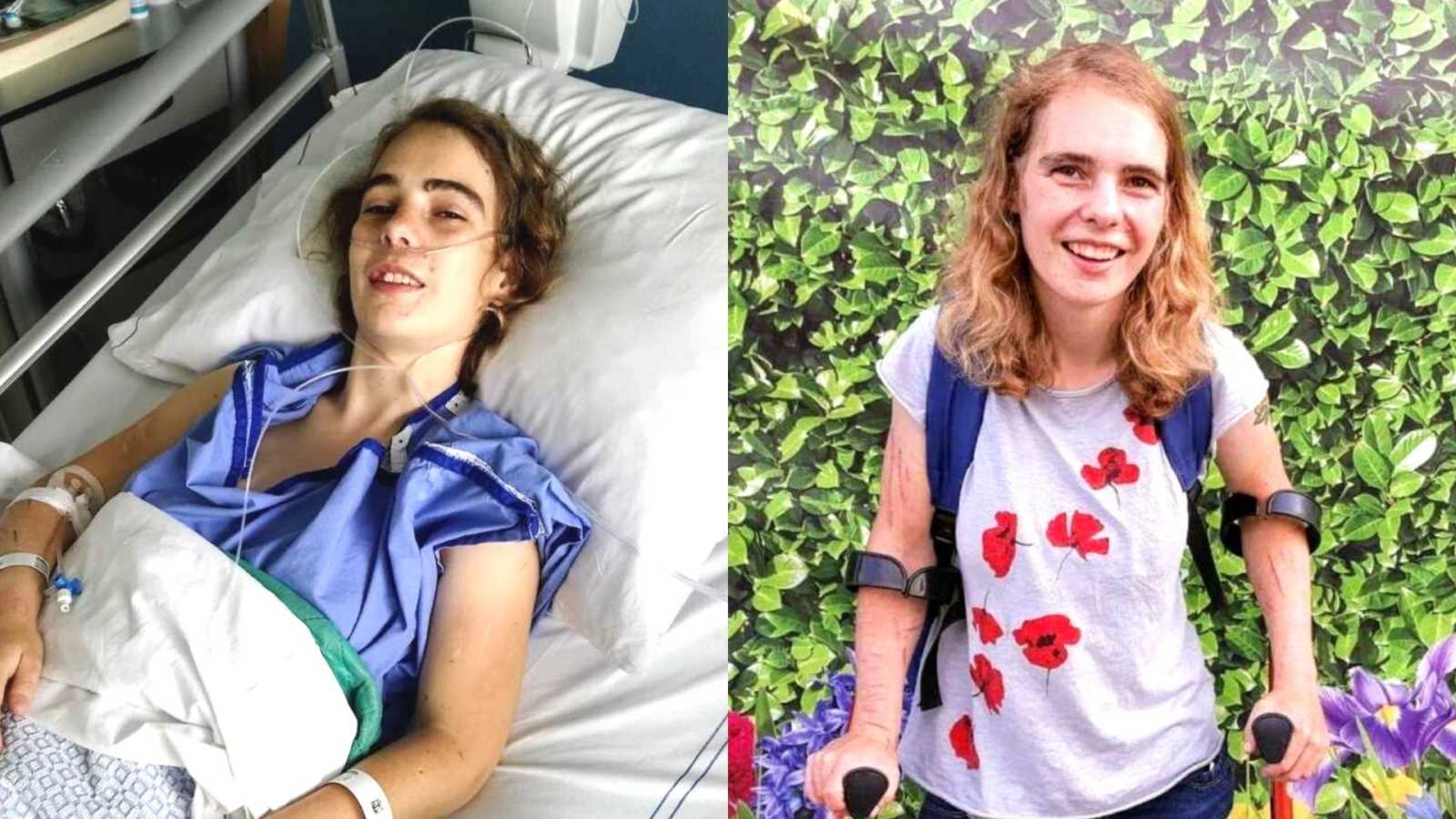Disclaimer: This story contains details of sexual assault and self-harm that may be triggering to others.
“I grew up in a small village in the Netherlands, called Oosternijkerk. Everybody knew each other, had their own language, their own circle of friends, their own soccer club, and so on. But I had nothing there. I couldn’t fit in there or in school. In school, I was different—my bones were different, and I couldn’t walk straight, sit, or stand for a longer period of time. It was not possible. My mobility was different than others. Nobody knew what was wrong with me.
Since I was 3, my mother felt some extra bones, and she thought I had some fractures. From that point, I visited an orthopedic. They didn’t know what it was, and there was no treatment, only some medication. I have two younger brothers (25 and 19), and my youngest brother also has the same bone disease. When I was 12, I couldn’t walk anymore because my legs were growing in an X-stand, so I needed an X-legs correction.
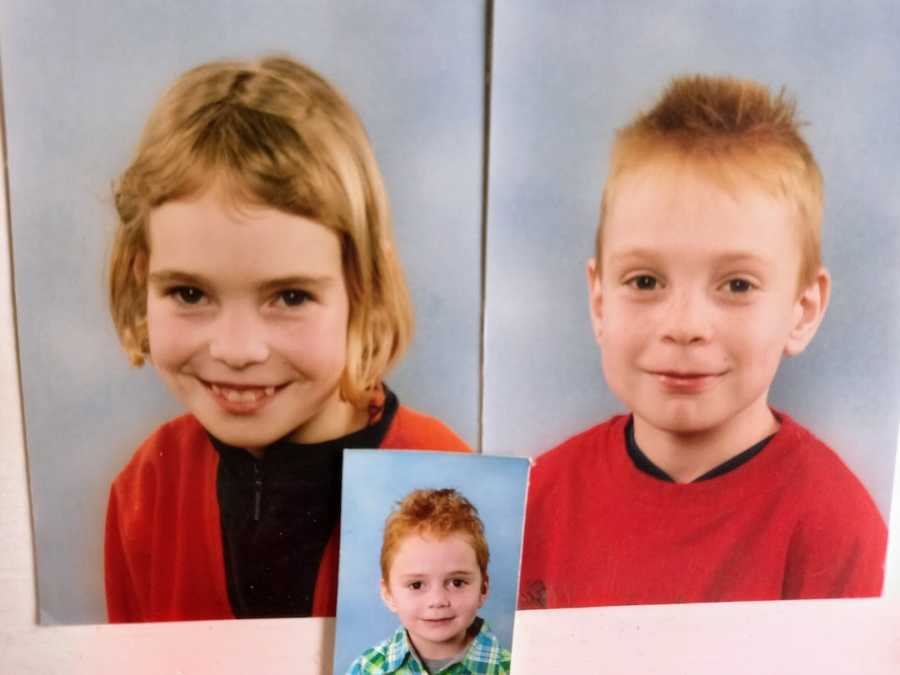
In my adolescence, I had more pain, pain everywhere, and my brother had it too, so it was hereditary. Our general practitioner did research and found a name of this rare bone disease—MHE-MO (Multiple Hereditary Exostoses—Multiple Osteochondromas). Before the name, it was difficult to explain what was wrong with me. With the name, we discovered a support group and we found out we were not alone. We also found people of my age and of the age of my youngest brother. The youth days were the nicest and the workshops were very informative.
MHE-MO is a disease that affects the long bones (arms and legs) of the skeleton, pelvis, ribs, and shoulder blades. It is characterized by a large number of benign bone tumors (a.k.a. exostoses /osteochondromas). MHE-MO is a hereditary congenital disease and has an autosomal dominant inheritance pattern, meaning you only need one mutated gene to be born with the disease.
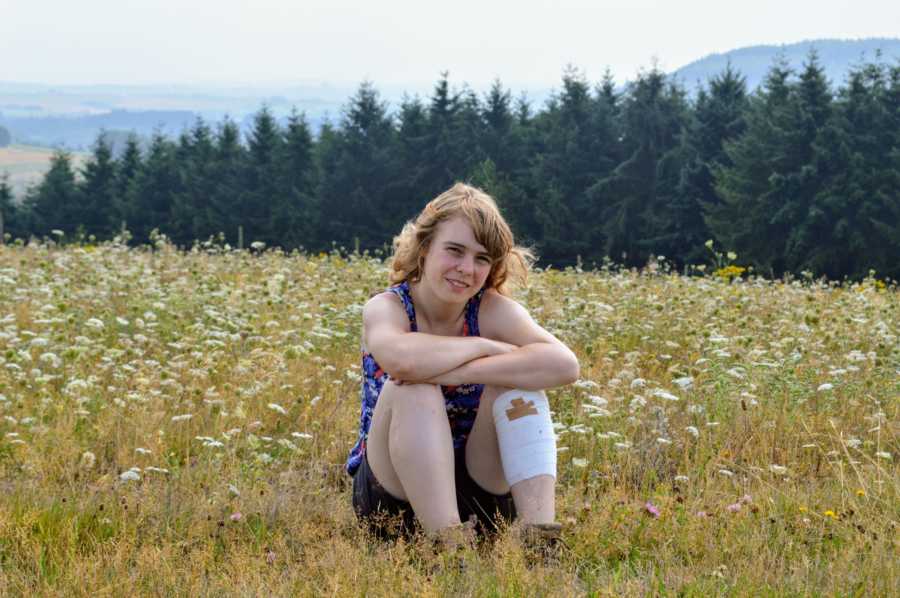
This also means MHE-MO patients have a 50% chance to pass on the disease to their children. My brother and I got this disease from our mother, and my mother got it from her mother and my grandma, and so on. MHE-MO is caused by one of two known genes: EXT1 or EXT2 on chromosomes 8 and 11. MHE-MO is a rare disease: it affects about 1 in 50,000 people. In the Netherlands, there are about 1,000 individuals with MHE-MO. There is something wrong with my chromosomes, and I missed a sign to stop growing part of my bones in my body. I have extra bones near my joints and it makes trouble in my body. For example, some extra bones (exostoses) pressed on nerves, muscles, and blood vessels, and this is very painful. Surgery is the only way to have less pressure and less danger in my body. I’ve had 15 surgeries. I think this is a lot, but I know people who have had much more.
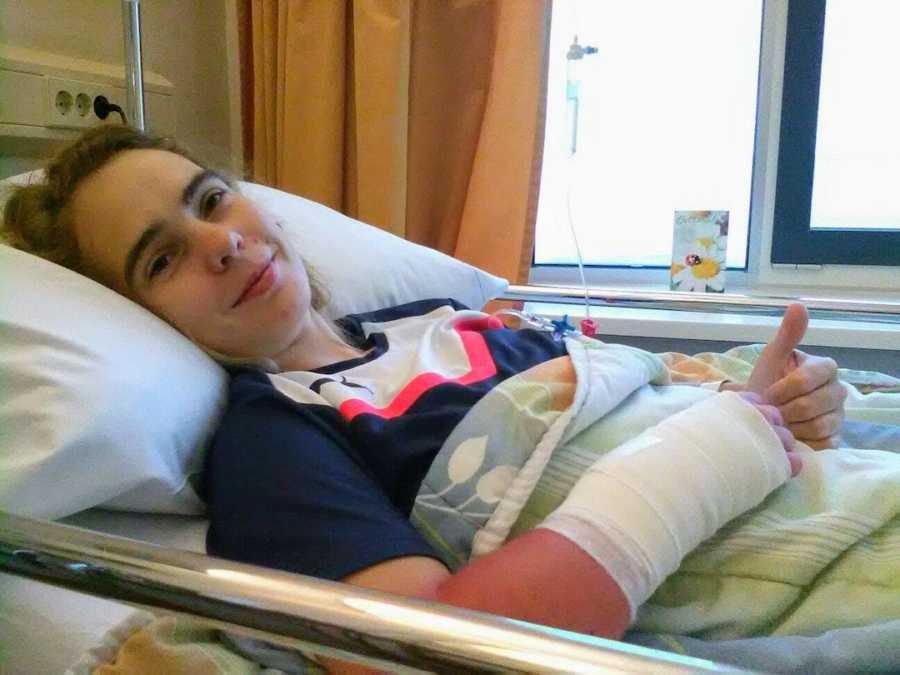
Someone with MHE-MO must have an MRI once every 1-2 years because there is a risk the exostoses changes into bone cancer. Happily, I didn’t have that yet. People with MHE-MO have hard lives and have to deal with joint pain and other pain, undergo many surgeries, pain treatments, physiology, and ergo therapy. They have a 10% chance of bone cancer and also have mental health problems. If you are interested in helping us with a donation, that would be nice. We needed money to finish our study about medicine for children so the HME-MO won’t cause deformity on the bones and stops making the exostoses in the whole body. The result of this is no more surgeries, and this would be great for our next generation. You can find more information here.
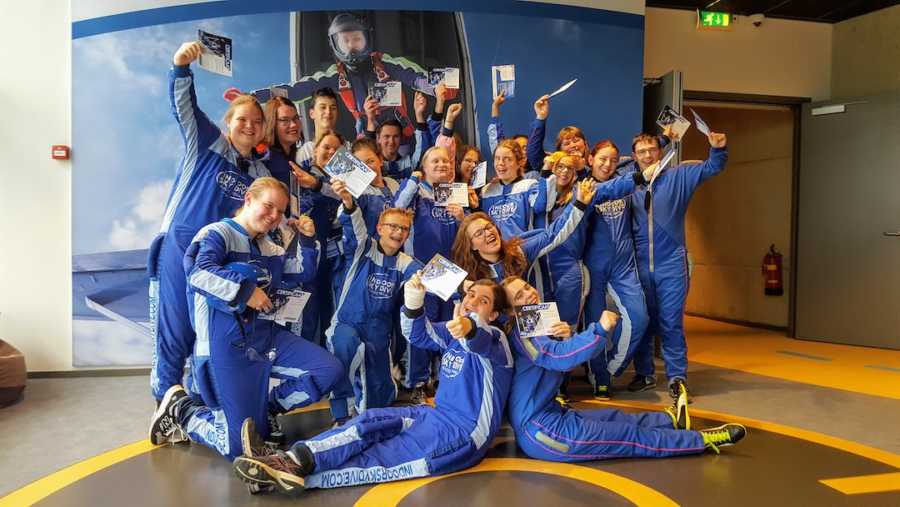
I had struggles with school and work because I have a lot of pain and have less concentration. I skipped a lot of classes because I had pain treatments and surgeries and had to spend 3 days-a-week in the hospital in Amsterdam. You need at least 6 weeks to recover, sometimes a lot more in reality. One operation failed and I have nerve damage in my left leg and later, I developed CRPS (chronic regional pain syndrome). My pain system was disrupted and there is no cure, only pain treatment. Most people heal from CRPS, but I didn’t, unfortunately. I have type two (with nerve damage) CPRS. My symptoms are less blood flow, different temperatures in my legs, no feeling of the ground under my feet, hypersensitivity to touch on my leg, and sweating. If you get CRPS, nurses focus on pain treatment and do this three times a year because the CRPS will disappear. Most of the patients have to deal with CRPS every day.
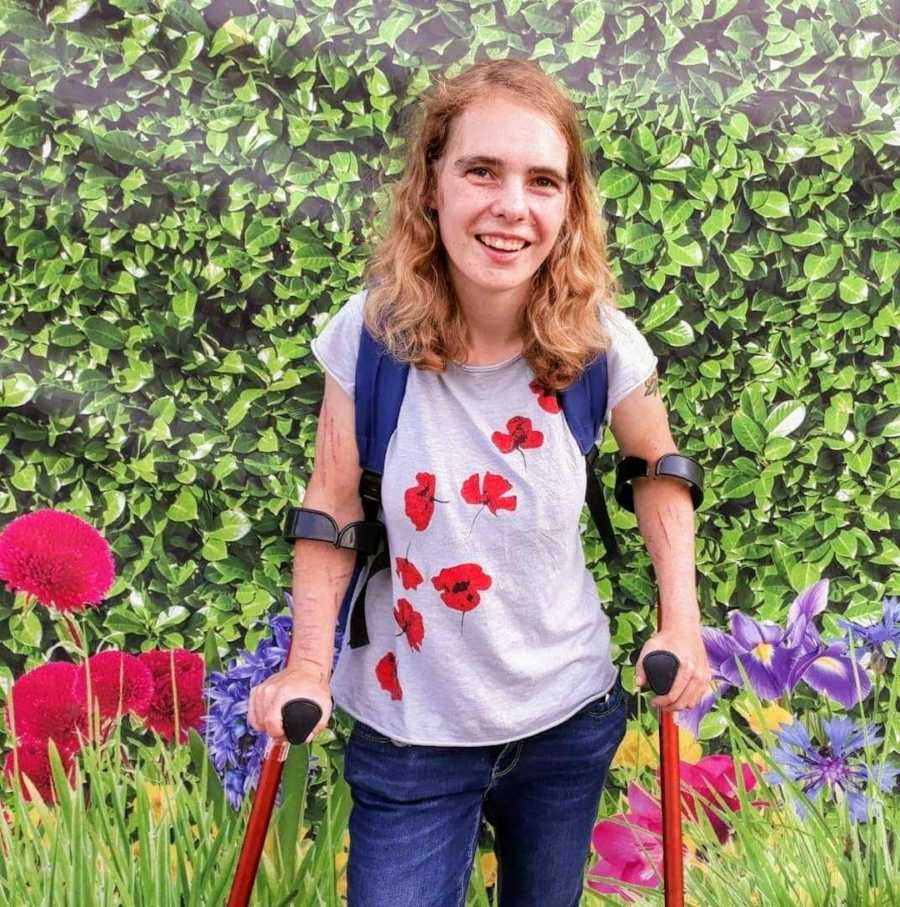
CRPS is also called the killing disease because of the high pain people have every day. I go to bed in pain and the next day, I stand up with more pain. CRPS and my MHE-MO changed my life completely. The treatments began with medication, and for me, this is Lyrica, naproxen, amitriptyline, and fentanyl (stronger than morphine). I also get nerve blockers and lidocaine injections. Nowadays, I get ketamine infusions three times a month. Ketamine is a very heavy medicine.
My first surgery, the X-legs correction, was hard. My drain in my leg was set wrong, so I lost blood and the bleeding didn’t stop for a while. My dad passed out in front of me. I was 12 years old, and I saw so much blood on my bed. I was in shock for 3 days. Since this experience, I got PTSD (from multiple traumas) and a needle and blood phobia.
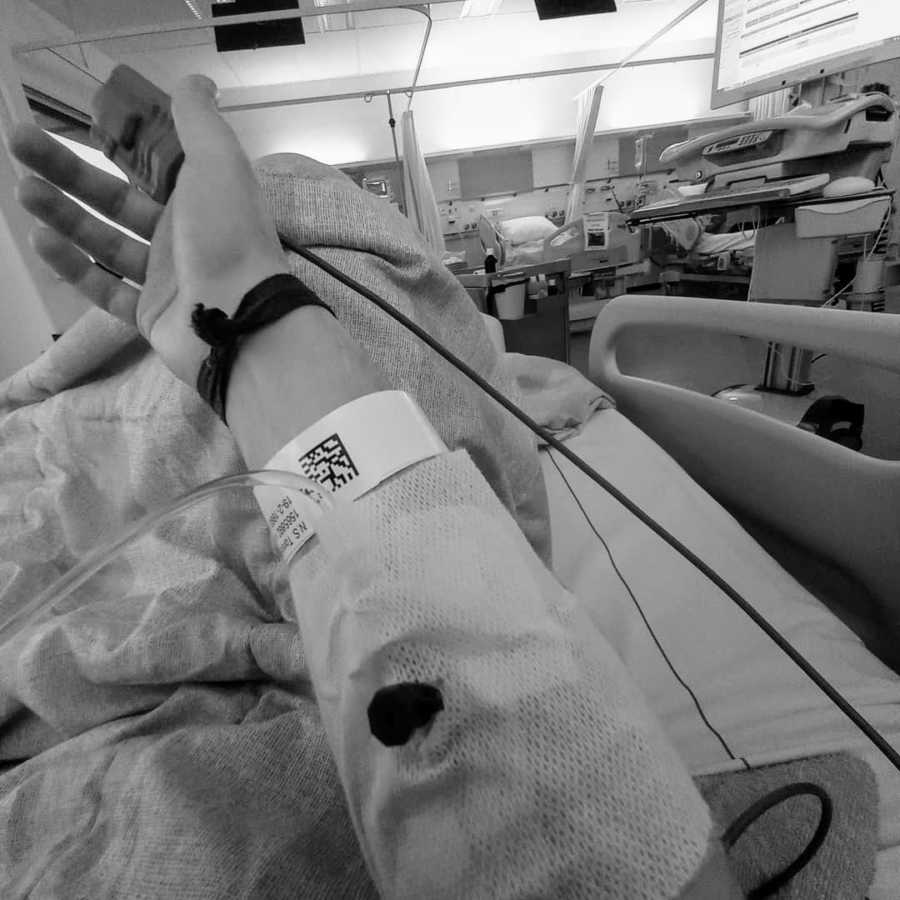
Since then, I was struggling in my life. I had to deal with bullying, because I needed crutches and couldn’t do gym and had trouble with the subject of blood in biology and history class. I was very shy, uncertain, and couldn’t talk about my feeling at home or at school, so I put them away so deeply I couldn’t feel anymore. I felt empty and lonely because no one understood me, not my parents, my ‘friends,’ doctors, or others. I felt the pain when I was alone in my room or on the bus, or during pauses at school. I also had nightmares and couldn’t fall asleep easily because I was thinking about blood and the surgery. In my nightmares, I would see blood. I thought these nightmares were okay to have and I couldn’t talk about it, so I moved on every night with this problem, with PTSD.

When I was older, I wanted to feel nothing, so I drank a lot on the weekends. I was 19 years old when I was raped by the best friend of my uncle in my uncle’s house. He knew me from when I was a baby and I felt safe with him, but it wasn’t with alcohol. It was messed up, and I blame myself and the alcohol. The sexual abuse has given me anxiety problems, panic attacks, sleep problems, an eating disorder, and an unsafe feeling and alertness all the time.
In October of 2014, I had to deal with many more pain attacks. I didn’t know why, but it was too much to handle and I had to do something. The pain attacks are still here. I have 24/7 chronic pain in my left foot. A year later, I got my diagnosis of CRPS. All my problems, physical and mental, changed me. I get more medical visits than visits from my friends.
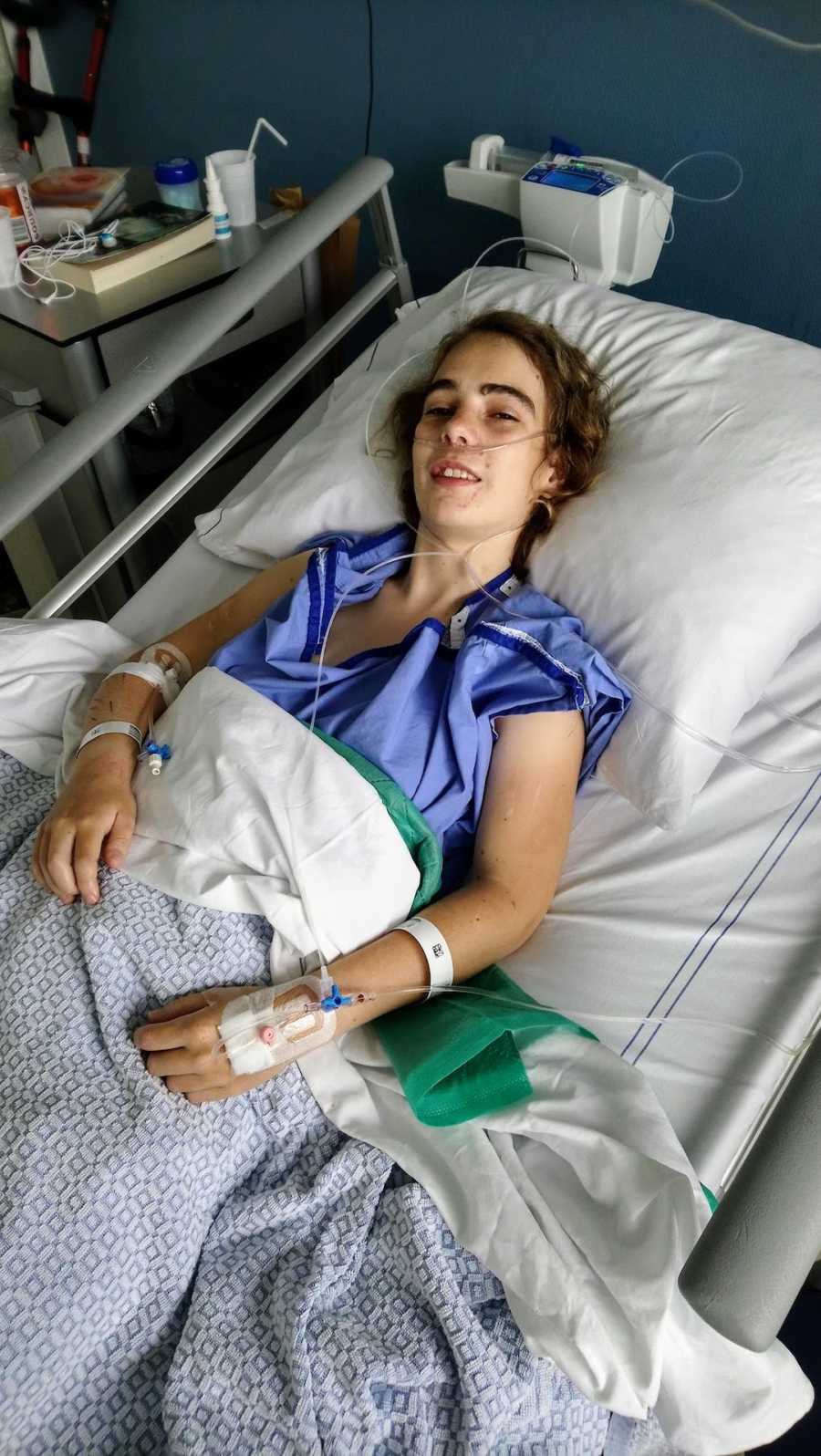
In 6 years, I had pain treatments, surgeries each year, medications and switches, injections, and ketamine infusions. Nothing works perfectly, but they help me do life day by day. It is difficult to explain to people how much pain I am in. Ketamine is very heavy for the body, but also for the mind because it gives me bad trips and sometimes I lose the reality completely. It is very scary sometimes, but I needed it for the pain for almost 2 months. Another label I have is Borderline Personality Disorder, which started when I probably was an adolescent because I had rage and anger in myself. I wore a mask. I felt empty and learned to smile most of the time. But later, I read about hurting yourself and the reason for it. I thought this could help me with my blood phobia, my stress level, my anxiety, and my pain. I attempted suicide, hurt myself more and more, and couldn’t handle too many setbacks, angry people, or other triggers.
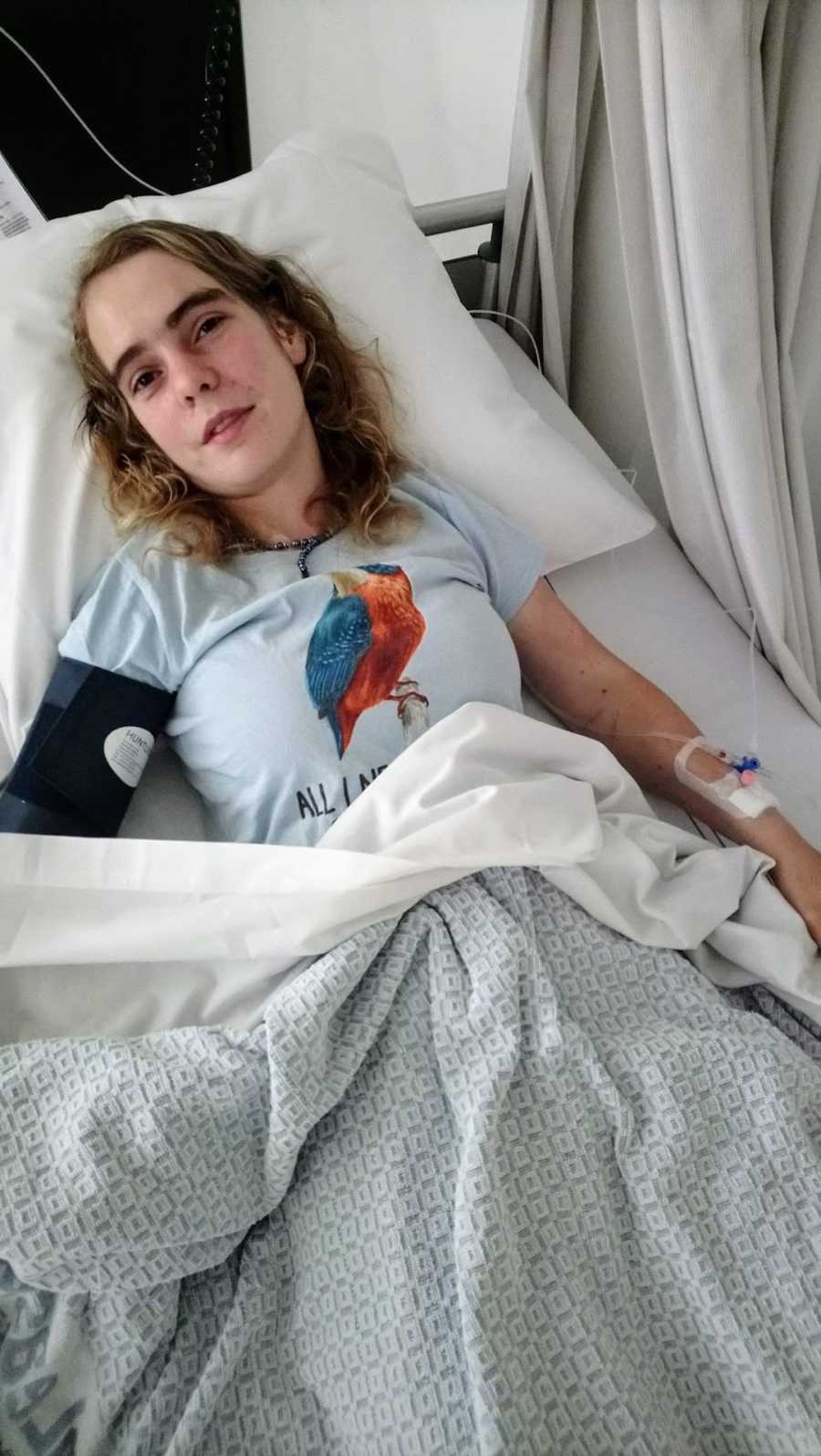
Last year, in 2020, I had to deal with sexual abuse again, this time with a friend. I knew him for 3 years, and he was very good at manipulation. I feel so ashamed and want to cry every day, but I can’t cry, only when it is too late. Hopefully, 2021 goes much better than in the past. Don’t look at the past, or look at the future, just look at right now. I am also someone who hurts myself. It began innocently, with a few scratches, and went to worse things, like skin grafting. I know my biggest reason for hurting myself is guilt and pain. With guilt comes negative emotions and I can’t handle them. To prevent panic, I hurt myself with scratches, sometimes with cuts.
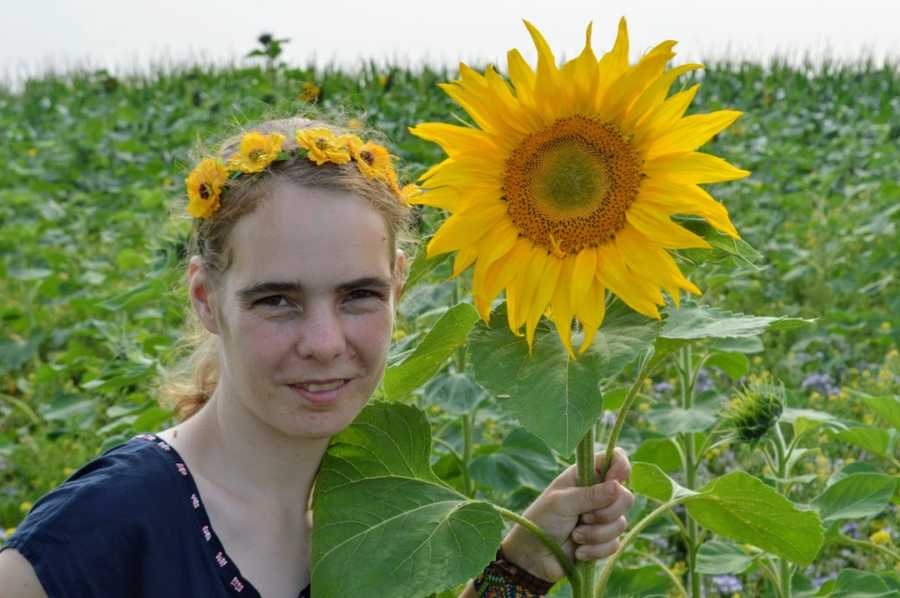
The other reason is to move the pain in my body because I am sick of the chronic pain in my body. I cut myself with frustration, and that’s the reason I get wounds with stitches. Nothing helps to release me from my own pain, even burns won’t help. There are people who think self-harm is a way to want attention. We want help, never attention, because every scar has its own reason. We are in a fight with ourselves, not with others, and the fight is difficult. Self-harm could be the safest thing you do and can become an addiction, and it is difficult to quit this. I became the criminal of my own body and mind because nothing helped the pain or illnesses together at the time. I started my Instagram account to share my story, my reality, and to give others the chance to share their stories, too.
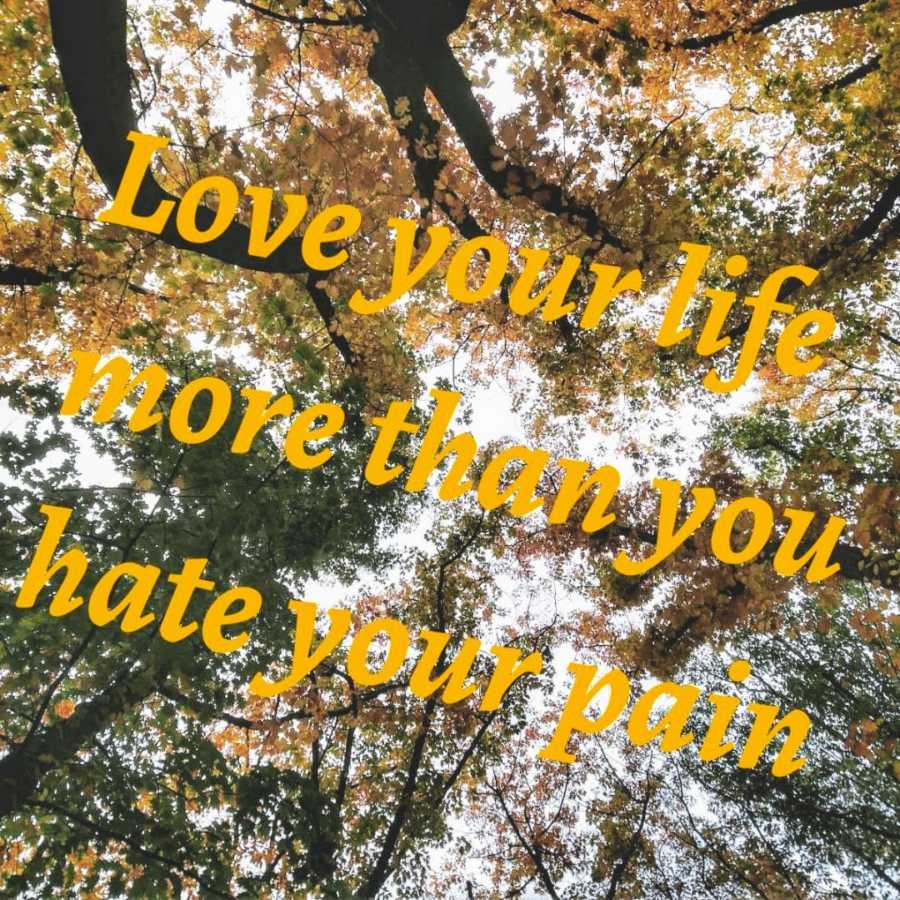
The other reason is to find some fellow sufferers who deal with the same problems and to feel not so alone anymore. I have had my account for a year now and I am happy with it. I post about important and nice things and being positive. I want to share the positive (maybe the little) things in life. For me, nature is a good distraction and I have a lot of photos to share because this is also my life, someone who loves nature and works with nature projects. Lastly, I would say things might be hard but not impossible. Let go of the things you can’t control.”
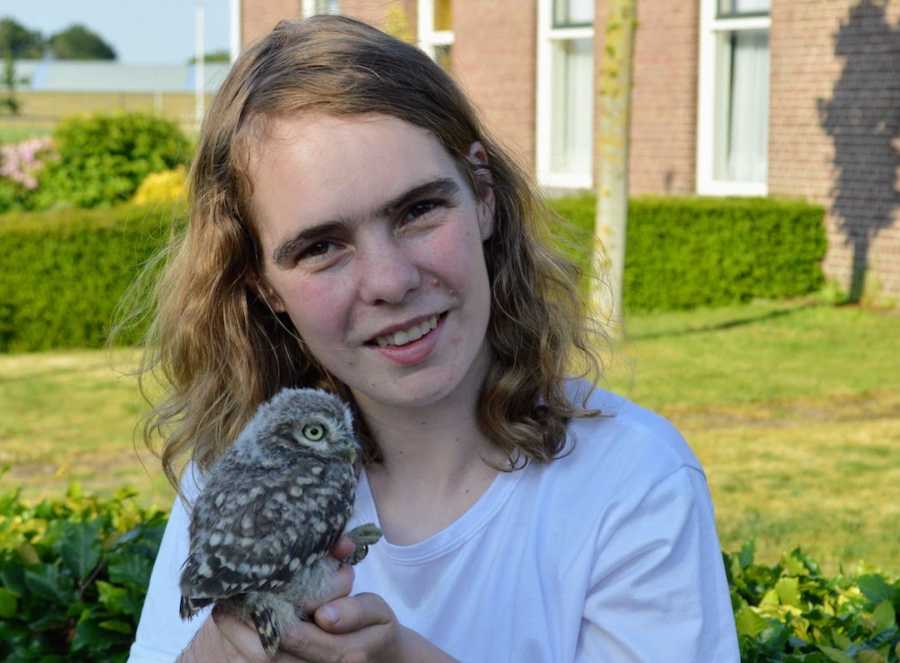
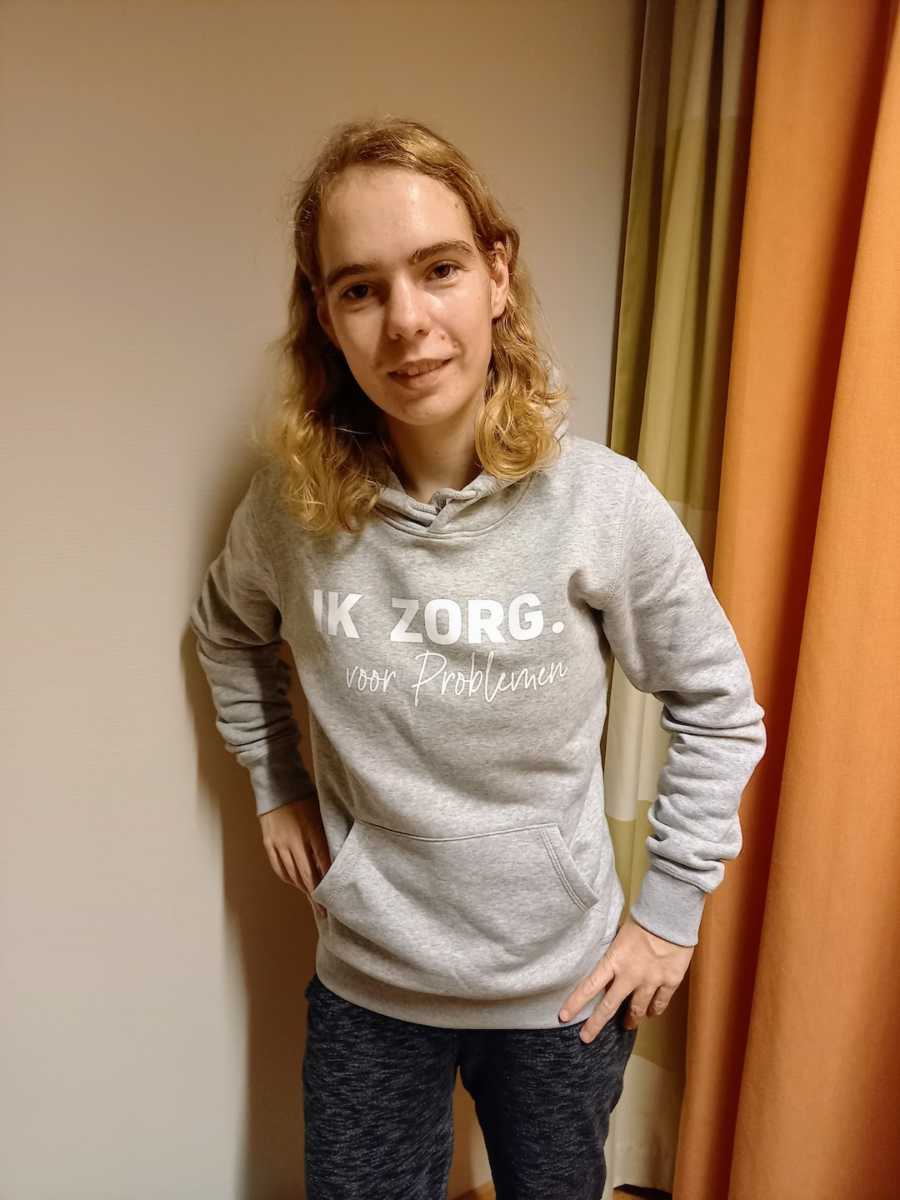
This story was submitted to Love What Matters by Nienke Torensma of the Netherlands. You can follow her journey on Instagram. Submit your own story here, and be sure to subscribe to our free email newsletter for our best stories, and YouTube for our best videos.
Read more stories like this:
Provide hope for someone struggling. SHARE this story on Facebook with your friends and family.

